Hexham, Northumberland
Up to 1834
A parliamentary report of 1777 recorded local workhouses in operation in Corbridge (for up to 100 inmates), Hexham (55 inmates), and Horsley (8 inmates).
In 1823, Wright's History of Hexham recorded that:
The Poor-house is situated near the head of Priest-popple. It is a large irregular building, and of different dates. Several poor families receive no farther relief from the parish than an asylum within these walls. The person presiding over the inmates is called "the Master." He contracts for the support of the establishment, and is responsible to the Overseers for the supply of necessaries and for the conduct of the persons committed to his trust. Each pauper admitted on the establishment is allowed by the parish two shillings and sixpence per week, paid to the master for his support. Other parishes or townships are allowed to join in the support of this establishment, and to partake of its benefits. Such allies pay a sum not exceeding £2. 2s. yearly, besides the weekly pittance of 2s. 6d. for each pauper admitted on their behalf.
The paupers' fare on Sunday and Thursday, which are called pot-days, is boiled beef, broth, and pease pudding, varied by other vegetables in season. Tuesday and Friday are collopdays, and afford fried bacon, &c. The savings of these days of plenty prevent the intervention of banian [meatless] days in the Poor-house. In years of scarcity a thin starch-like mixture of flour and water made an occasional dish at the dinner table and constantly appeared at breakfast, but its place is now supplied by wholesome milk and nutritive crowdy. The more delicate dispose of their common viands to purchase an occasional dish of tea or some such luxury. The greatest attention is paid to cleanliness and order; and we strongly recommend to the unappetised gourmand, or the nice-stomached lady of quality, an occasional peep into a poor-house, and cordially wish them a relish for paupers' fare.
In 1827, the Hexham workhouse had a female governess, Mrs Mary Hutchinson. At the same date, the Corbridge workhouse was described as "a plain building, situated in Watling-street, where Mr. James Bowman presides as governor."
After 1834
Hexham Poor Law Union formally came into existence on 22nd October 1836. Its operation was overseen by an elected Board of Guardians, 80 in number, representing its 69 constituent parishes and townships as listed below (figures in brackets indicate numbers of Guardians if more than one):
Northumberland: Acomb, Acombe East, Allendale (6), Anick Grange, Anick, Apperley, Aydon Castle, Aydon, Bearle, Bingfield, Blanchland High Quarter, Broomhaugh, Broomley, Bywell, Chollerton, Clarewood, Cocklaw, Corbridge (2), Dilston, Dukeshagg, Eltringham, Espershiels, Fallowfield, Hallington, Halton Shules, Halton, Haydon (2), Healey, Hedley, Hedleywoodside, Hexham (5), Hexham High Quarter, Hexham Low Quarter, Hexham Middle Quarter, Hexham West Quarter, High Fotherly, Horsley, Houghton, Humshaugh, Mickley, Nafferton, New Biggen, Newbrough, Newlands Newton Hall, Newton, Ovingham, Ovington, Portgate, Prudhoe Castle, Prudhoe, Riding, Sandhoe, Shotley Low Quarter, Simonburn, Slaley Out Quarter and Slaley Town, Spittle, Stilling, Stocksfield Hall, Styford, Thornborough, Wall, Warden, Welton, Whittle, Great Whittington, Little Whittington, Whittonstall, Wylam.
The population falling within the union at the 1831 census had been 27,271 with parishes and townships ranging in size from Spittle (population 7) to Allendal (5,540) and Hexham (4,666). The average annual poor-rate expenditure for the period 1834-36 had been £8,912 or 6s.6d per head of the population.
A new Hexham Union workhouse was built in 1839 on the south side of Dean Street at the eastern edge of Hexham. It underwent major alterations and additions in 1883 with the addition of an administration block and sick wards at the western end of the buildings. The workhouse location and layout are shown on the 1920 OS map before the creation of Corbridge Road which now runs along the south of the building:
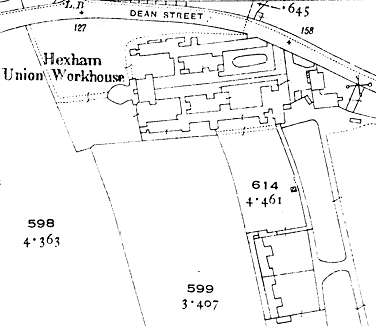
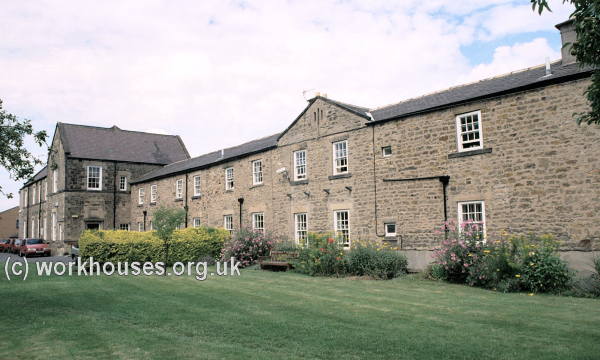
Hexham main building from the south-east, 2001.
© Peter Higginbotham.
The area between the accommodation blocks formed yards which were divided up to keep the various classes of inmate separate.
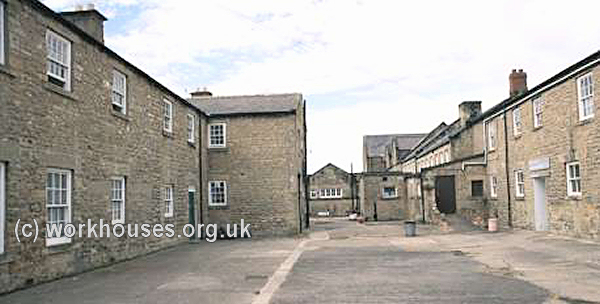
Hexham southern yard from the east, 2001.
© Peter Higginbotham.
The original workhouse sick wards way have been in one of the blocks at the east of the building.
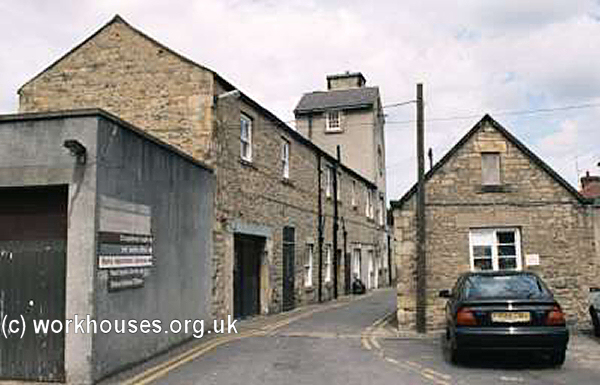
Hexham original sick wards(?) from the south, 2001.
© Peter Higginbotham.
In 1863, detached schools were built — an 1866 report noted that "the boys sometimes dig and plant the garden; the girls sew and knit, and the elder assist in milking and churning, for which purpose two cows are kept."
The 1883 extensions at the west of the site included an administration block and Master's house flanked by sick wards for male and female patients.
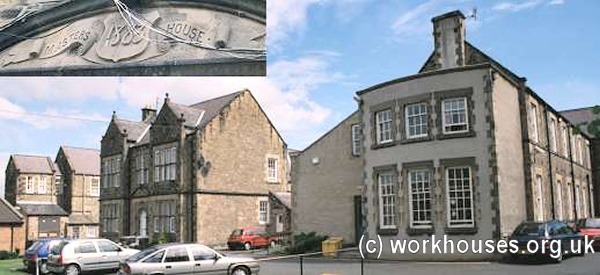
Hexham 1883 extensions from the south-west, 2001.
© Peter Higginbotham.
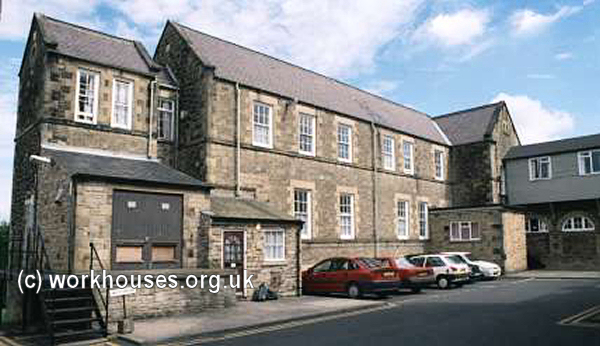
Hexham 1883 sick ward from the south-west, 2001.
© Peter Higginbotham.
After 1930, the workhouse became Hexham Public Assistance Institution. During the Second World War the buildings were adopted for administrative use. Following the introduction of the National Health Service in 1948, the site became part of Hexham General Hospital. In more recent times, most of the former workhouse buildings are now used for administrative purposes and then for a period in residential use. In 2014, the buildings were empty and rapidly declining.
Children's Home
The Hexham Union established a home, known as Fellside (or Fell Side), which housed about children. Its location is unclear but was presumably in the area of that name about a mile to the south-east of Hexham.
Staff
Inmates
Records
Note: many repositories impose a closure period of up to 100 years for records identifying individuals. Before travelling a long distance, always check that the records you want to consult will be available.
- Northumberland Archives, Woodhorn, Queen Elizabeth II Country Park, Ashington, Northumberland NE63 9YF. Holdings include: Guardians' minutes (1836-1930); Ledgers (1836-1930); Letter books - out (1881-1927); etc.
Bibliography
- Wright, A.B. (1823) An Essay Towards a History of Hexham
- White's History, Directory & Gazetteer of Durham & Northumberland, 1827
Links
- None.
Unless otherwise indicated, this page () is copyright Peter Higginbotham. Contents may not be reproduced without permission.


